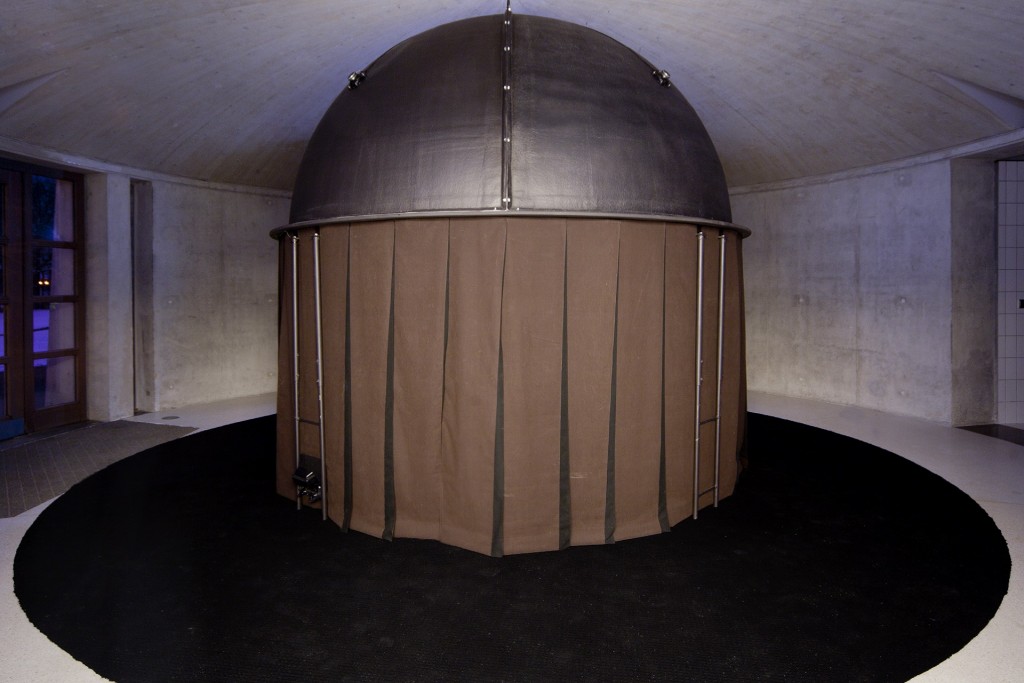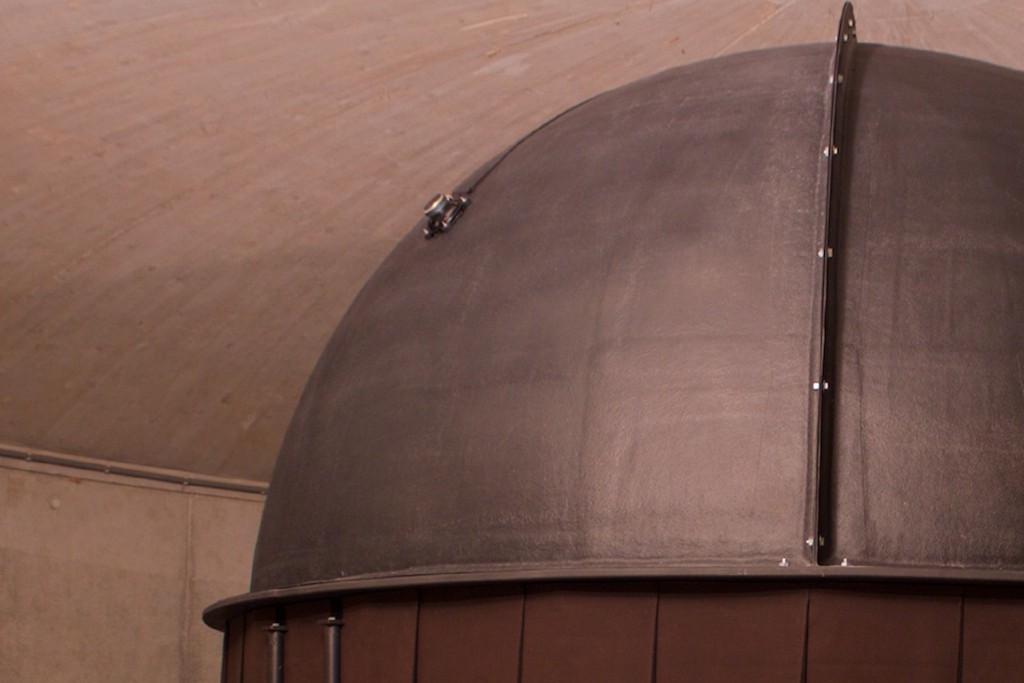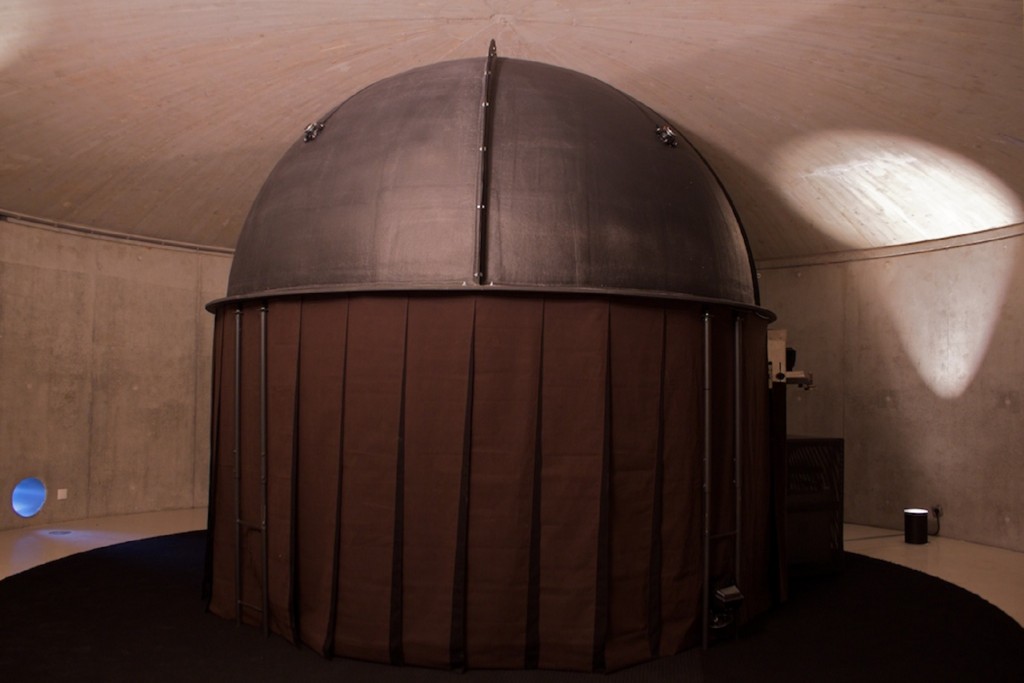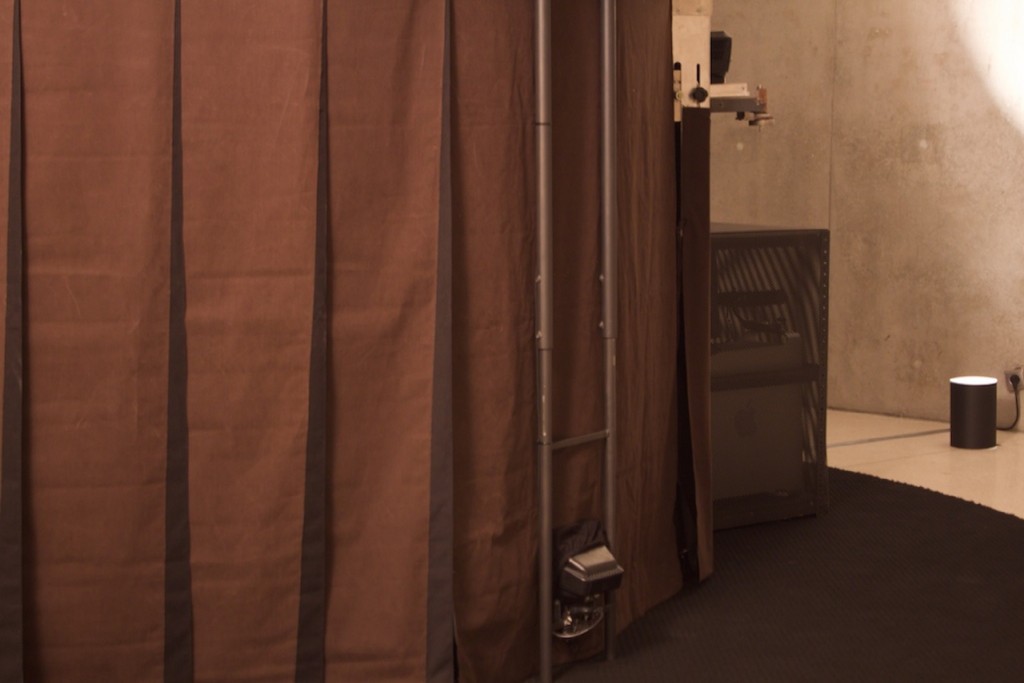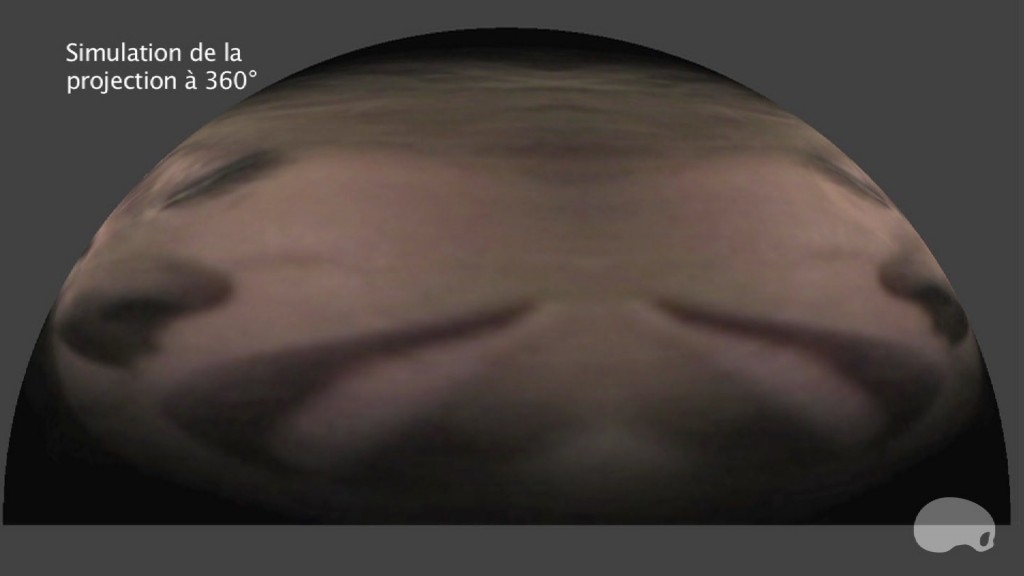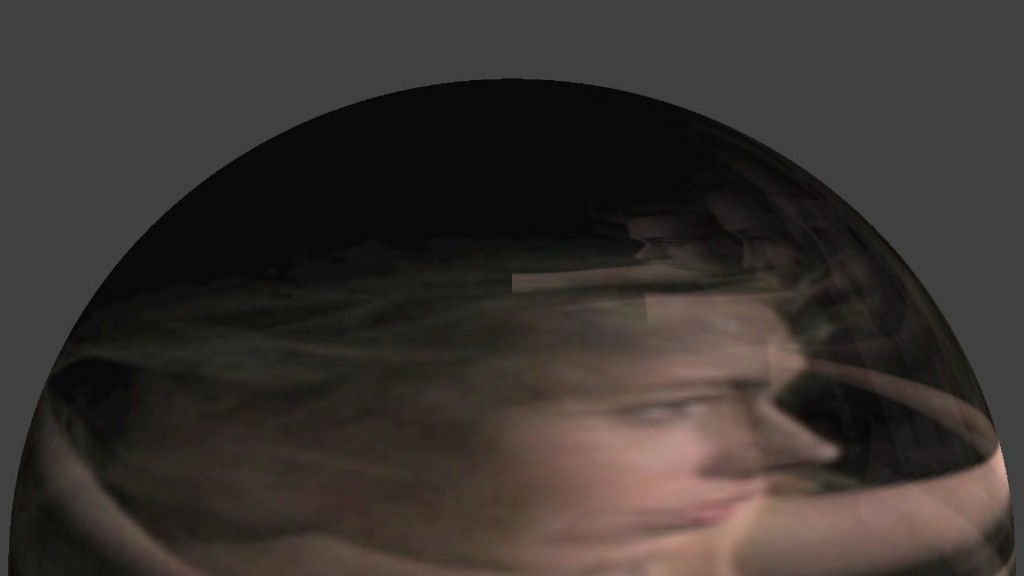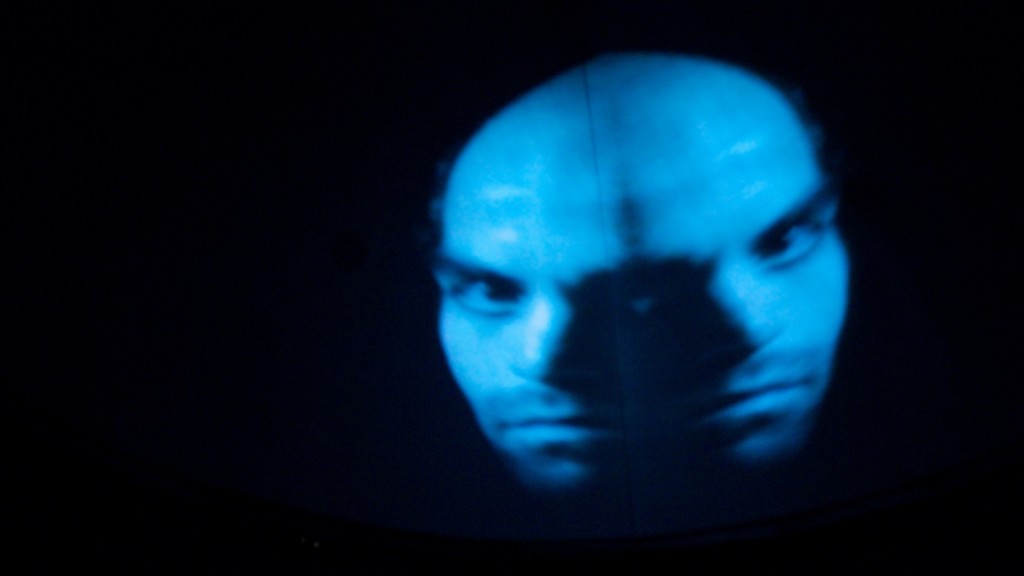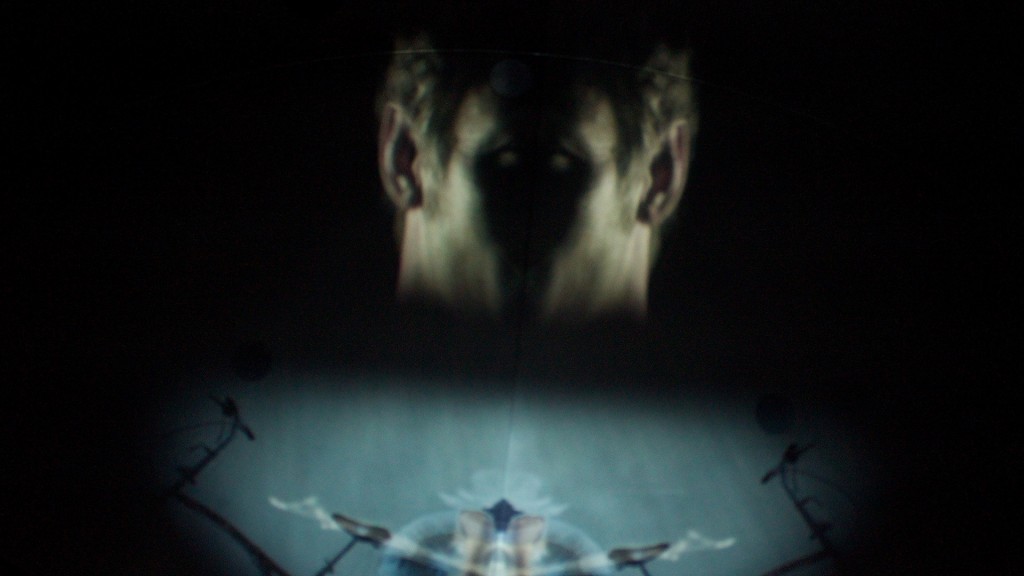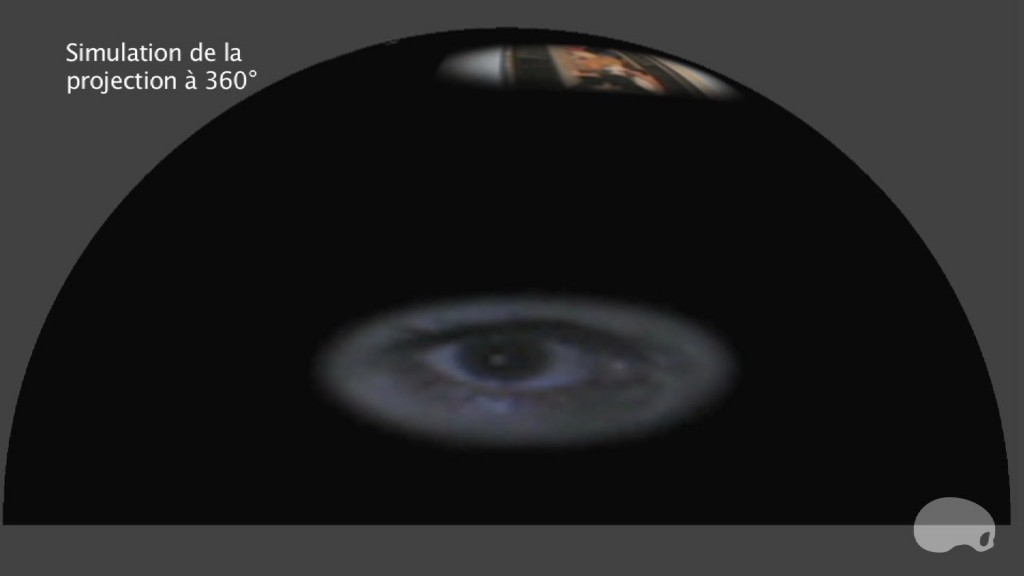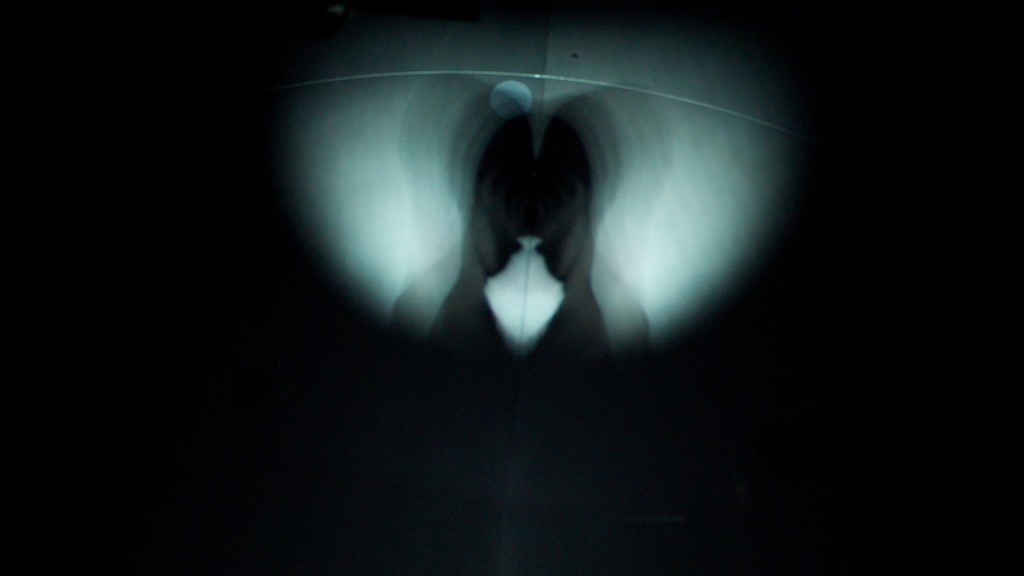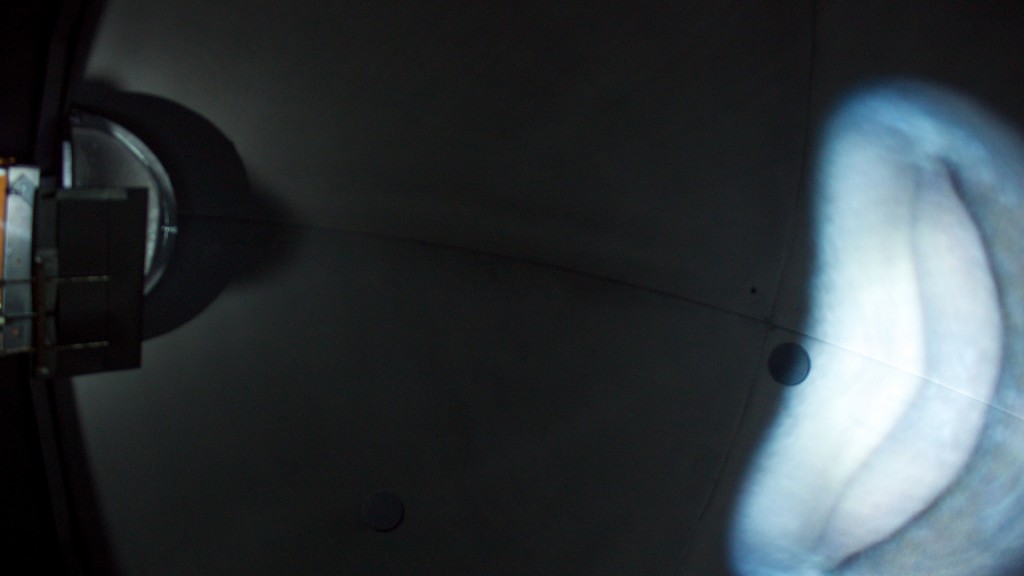Computer, infrared camera, video projector, hemispherical mirror, 5.1 surround sound system, steel, resin, Ø 300 x 350 cm.
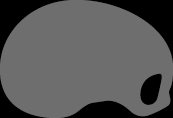
Méta-Crâne
2010>15 / Immersive / Sculpture / Interactive / Poetry Based
Computer, infrared camera, video projector, hemispherical mirror, 5.1 surround sound system, steel, resin, Ø 300 x 350 cm.
rs)
”An attempt to reconstruct the behaviours of the subconscious, by free association, based on all of Thomas Israël’s video work.
Méta-crâne is is an immersive and interactive sculpture witch deal with the process of free association. Its Size is 3m wide, 3,5m hight and 4m long. Méta-crâne is a technical reconstruction of a symbolical process that we all know well but often repress: free association. A network of neural activities is being simulated and processes a certain amount of new events, past episodes and ancient memories that are presented to the “spect-actor” within an immersive environment. Its purpose: transposing self-disclosure and creating new meanings inside an interactive object. When the spect-actor enters the Méta-crâne, he gradually perceives the inherent and emergent behavior of the installation, while the flow of audiovisual fragments which are sequenced around him tends to take into consideration his body rhythm revealing his serenity or discomfort, and so on…, but without being granted “1:1” control. The initial content of the multimedia database presented to the spect-actor is composed of material extracted from Thomas Israël video work.
From Outside
My interest in the subconscious and the formation of meanings based on non- narrative content stems from the analytical process, where we seek to dig over the truth wherever it crops up, in spite of itself. For Méta-crâne, I wanted the interpretations of charged images to create truths. What are we seeking in a work of art if not to find a little light in the depths of the forest? In Méta-crâne, we lose ourselves in the labyrinth of my thought, but the dream leads to a catharsis, a form of enlightenment. Through their combination, my images create meanings that are stronger than the sum of their parts. My desire, with Méta- crâne, was to work on the functioning of the subconscious and free association to create a dream machine. Méta-crâne is the result of two years of research with engineers from the Numediart Research Institute at the University of Mons, including the excellent Xavier Siebert. These engineers developed a programme to analyse and classify all of my videos through objective criteria (colour intensity and variation, speed, contrast, etc.). I cut up all of my films into thousands of “mini-clips”, which were then classified according to these criteria in order to be rearranged and compose another film, in which videos follow on from one another according to these formal criteria. In other words, it is the equivalent of the notion of free association for machines. Subsequently I created algorithms for automatic video editing, defining the editing methods, the types of alternation and evolution, but not the films used, in order to enable the computer to unendingly create a new film, drawn from the categorised database. This film, which is constantly being rewritten, was then projected in 360° on the concave roof of the Méta-crâne. Surrealist heritage is clearly present here. The result is a never-ending film, taking me out of my subconscious and at the same time bringing me very close to it. The spectator can make connections between these various films which he perhaps would not have done in his normal waking state, but which make sense in a dreamlike state. He dreams, escapes and builds his own logic, freed from narration imposed by the artist, who now only proposes associations; it was also the desire to be surprised by material that I nevertheless knew by heart—and to discover new meanings in this madness. I did the opposite of what is generally done in interactive art. An infrared camera observes the interior of the skull. If the public is too excited, the programme slows down the video mix so that the audience calms down and better understands the process. If on the other hand the visitors are calm, the mix speeds up, as they are therefore in a state to receive more images per second. It is an interactivity which is neither entertaining nor directly visible or central, but which places itself at the service of the work’s receptivity. It amuses me to see visitors, who are already accustomed to interactive art, making great gesticulations in the skull, in the hope of triggering a reaction of sequences, whereas the quicker they move around, the less happens.”
Thomas Israël, in THE MEMORY OF THE BODY Interview with Philippe Franck in Memento Body – La lettre volée 2013
From Inside
Team
Conception & développement: Thomas Israël; Recherche et développement logiciel /Software development : Numédiart (direction : Thierry Dutoit), Projet Media-cycle (Xavier Siebert, Loïc Reboursiere) ; Coordination : Christian Frisson ; Consultance spacialisation sonore / Sound spatialisation advisor : Todor Todoroff ; Collaboration interactivité : Laura Colmenares Guerra , Julien Odeur ; Réalisation / Construction prototype et support projecteur : Thierry Sablon ; Couture / Seamstress : Odile Dubucq et Isabelle Airaud ; Construction dôme : Hubert Mortier-Procrétion. — Données techniques / Technical data Analyse et classification des médias / Media analysis and classification : Média-cycle plug-in for Méta-crâne développé par / developed by Numediart. Vidéo and sound interactivity, 5.1 custom sound spacialisation : Isadora core audio and video. IR motion tracking et analyse de comportement / Behaviour analysis pour une à quatre personnes / for one to four people : Isadora. Projection hémisphérique / Hemispherical mirror & HD projector using Paul Bourck technique & matrices. — Crédits / Credits Musiques / Atmospheres : Christian Callon (Rivière Noire), Margerida Guia (Percept), Gauthier Keyaerts (Le Ventre du monstre, À Ma d’Azil), Yves Mora (T comme…), Jan Pankowski (Sueur de pêche), Mathieu Therrien (Atomes), Jacques Urbanska (IS.TröM), The Residents (The Residents Inner dive at MoMA). — Voix / Voices Delphine Auby, Françoise Berlanger, Antonin de Bemels, Thomas Israël, Laurence Lichens, Conchita Paz, Bertrand Perignon, Psyché Piras, Paul-Emile Renkin, Céline Taubeneste. — Acteurs / Cast Sylvio-Manuel Arriola, Marion Arlaud, Sabine Bernaud, Anne- Marie Boisvert, Karin Clercq, Thomas Israël, Pascal Leclercq, France de Griessen, Zhou Mu Jie, Ariane Loze, Bertrand Perignon, Psyché Piras, Claudio Stellato, Christophe Tellez, Nora Tsibida, Nonglak Yingsuksantisuk. — Production In Progress asbl – Transcultures, collaboration avec / with Numediart – programme de recherche dans les technologies de l’art digital ; avec le soutien de la / supported by the Commission Arts numériques de la Communauté française de Belgique ; résidence au BRASS : Centre culturel de Forest.
